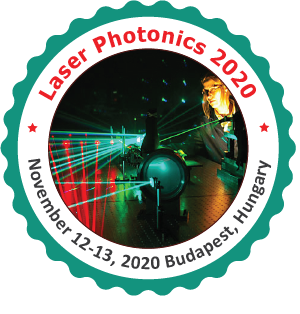Dr. Natalia Nosidlak
1. Institute of Physics, Cracow University of Technology,Poland
Title: Ellipsometric studies of thin polymer layers forming part of organic photovoltaic cells
Biography
Biography: Dr. Natalia Nosidlak
Abstract
In this work we present the results of the ellipsometric studies of thin films, that are part of the organic photovoltaic cell. The investigated cell, as the active layer, contains a traditional donor-acceptor structure in the form of a bulk-heterojunction (BHJ). The tested photovoltaic cell have the following structure: ITO/PEDOT:PSS/P3HT+PQ/Al. The active layer is a blend of the P3HT (Poly (3-hexylthiophene-2-diyl)) and a low molecular weight compound from the pyrazoloquinolines group marked as PQ (1,3-phenyl-6-fluorine-1H-pyrazolo[3,4-b]quinoline). The ITO layer, act as the hole collecting electrode. The PEDOT:PSS (Poly(3,4-ethylenedioxythiophene)-poly(styrenesulfonate) layer has been used to smooth the ITO and facilitate the transport of holes. The presented layers have been tested using spectroscopic ellipsometry (SE) method.
The paper presents the results of our investigation that determined the spectral dispersion of optical constants in a wavelength range of 190-1700 nm by using SE technique.
The appropriate theoretical models have been fitted to the results of the SE measurements, which allowed to determine the thickness of the layers and the dispersion relation of refractive and extinction indices.Furthermore, we are showing here the temperature dependence of refractive indices of polythiophene films for a heating and a cooling process in a temperature range of 25-110°C. Additionally, thermo-optic coefficients and an optical gap were established and presented in the paper, followed by a discussion on the conditions of thermal stability of presented layers and reversibility issues in thermal processes.

